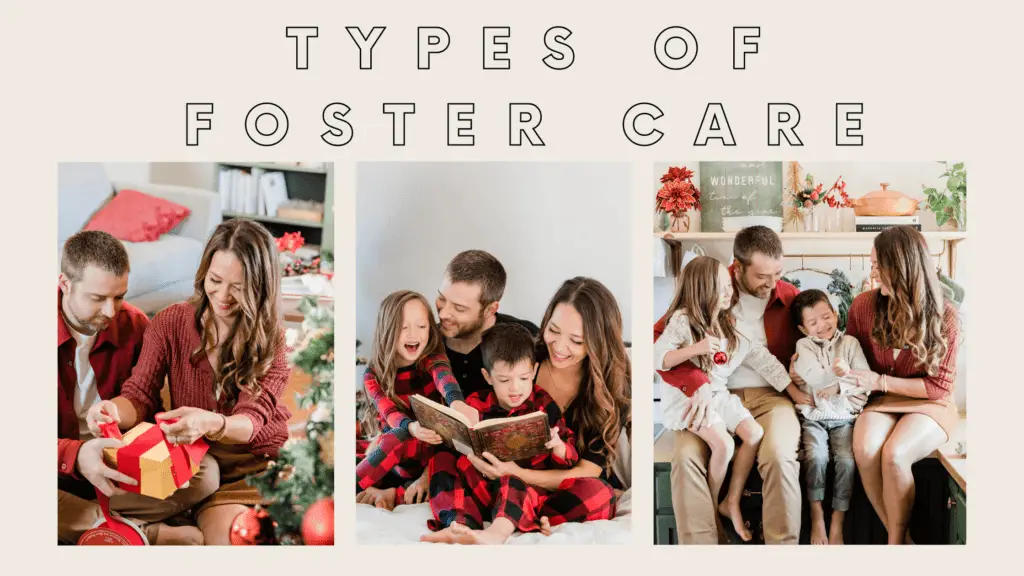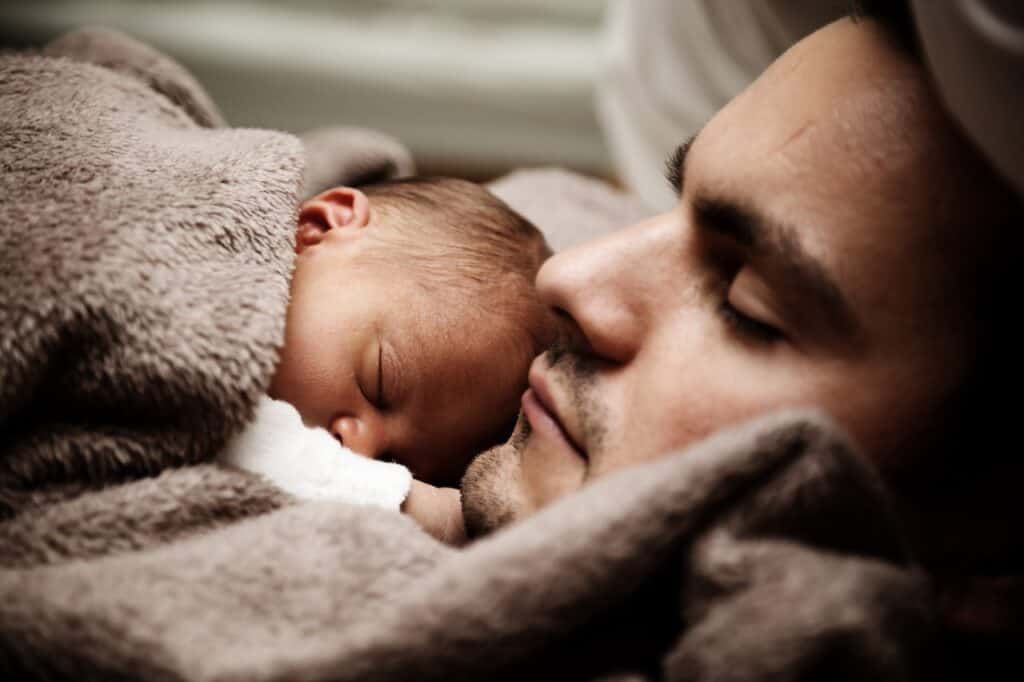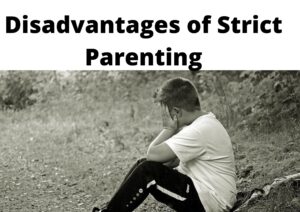Day by day, foster care is getting more attention and many people are considering it. What people are not aware of is that foster care placement comes in various types. Hence, when you talk about foster care, you should at least specify which type you are talking about. There are several different types of foster care placement that a child may be placed in, depending on their needs and the resources available.
The common types of foster care placements are: Traditional foster care, Group home foster care, Emergency foster care, Kinship care and finally residential treatment foster care.
Types of Foster Care Placement
Since the goal is to assist you understand the various types of foster care placements, let’s go a little bit deeper and see the advantages and disadvantages of each foster care placement.
Traditional Foster Care
Among the types of foster care placement, this type of placement is the most common. Traditional foster care is a type of foster care in which a child is placed with a family in a private home. The foster family is responsible for providing a safe and nurturing environment for the child, as well as meeting their basic needs such as food, clothing, and medical care. In traditional foster care, the child may live with the foster family for a short period of time, or they may stay with the family until they are able to be reunited with their birth family or placed in a permanent adoptive home.
Traditional foster care is typically coordinated through a child welfare agency or other government agency, which provides training and support to the foster family and works to find a suitable placement for the child. The goal of traditional foster care is to provide a temporary, safe, and supportive living environment for the child while efforts are made to address the issues that led to the child being placed in foster care and to work toward a permanent resolution for the child’s living situation.
Related: What Makes a Good Foster Parent
Advantages of Traditional Foster Care
There are several potential advantages to traditional foster care for children in need of a temporary living arrangement:
- Familiarity and stability: Traditional foster care provides a sense of familiarity and stability for children who have been removed from their homes due to abuse, neglect, or other safety concerns. Living with a foster family can provide a child with a sense of belonging and can help them feel more connected to their community.
- Individualized care: Traditional foster care allows children to receive individualized care and attention from their foster parents, who are able to tailor their care to the specific needs and preferences of the child.
- Opportunities for growth and development: Traditional foster care can provide children with opportunities to learn new skills, participate in activities and hobbies, and develop healthy relationships with their foster family and others in their community.
- Support and guidance: Traditional foster parents are typically trained and supported by a child welfare agency or other government agency, and can provide children with the guidance and support they need to navigate their temporary living situation and work towards a permanent resolution.
- Potential for reunification: Traditional foster care can provide a temporary, safe, and supportive living environment for children while efforts are made to reunite them with their birth family if that is in the best interests of the child.

Disadvantages of Traditional Foster Care
Apart from the advantages, this placement type also has some potential disadvantages to that may be worth considering. They include:
- Lack of consistency: For some children, moving between different foster homes or experiencing multiple placement changes can be disruptive and unsettling.
- Limited control over living environment: Children in traditional foster care may have limited control over their living environment and may not have a say in decisions about their care or placement.
- Limited access to the birth family: Children in traditional foster care may have limited contact with their birth family, which can be emotionally difficult for some children.
- Transition to permanent placement: For some children, the transition from traditional foster care to a permanent adoptive home or to living with their birth family can be challenging.
- Limited access to specialized resources: Children in traditional foster care may not have access to specialized resources or therapies that may be available in other types of foster care placements, such as group homes or residential treatment facilities.
Group Home Foster Care
Group home foster care placement is the next to focus on in the list of types of foster care placements. It is a residential facility that provides a home-like environment for children in foster care. It may be staffed by trained professionals and may be able to provide specialized care for children with disabilities or other special needs.
This form of foster care is typically used for children who may not be able to live with a traditional foster family due to their specific needs or challenges. Group homes may provide a range of services and support, including therapy, education, and medical care. The goal of group home foster care is to provide a safe and supportive living environment for the child while efforts are made to address the issues that led to the child being placed in foster care and to work toward a permanent resolution for the child’s living situation.
It is typically coordinated through a child welfare agency or other government agency, which is responsible for placing the child in a suitable group home and providing ongoing support and supervision.
Keep in mind that this is a temporary living arrangement, and the goal is to eventually reunite the child with their birth family or find a permanent adoptive home for the child.
Advantages of Group Home Foster Care
There are several potential advantages to group home foster care for children in need of a temporary living arrangement:
- Specialized care: Group homes may be able to provide specialized care for children with disabilities or other special needs, such as physical, developmental, or behavioral challenges.
- Structure and support: Group homes typically have a structured environment and may offer a range of support services, such as therapy, education, and medical care.
- Sense of community: Group homes can provide a sense of community and belong for children who may have difficulty connecting with others in a traditional foster care setting.
- Support and guidance: Group homes are typically staffed by trained professionals who can provide children with the support and guidance they need to navigate their temporary living situation and work towards a permanent resolution.
- Potential for reunification: Group home foster care can provide a temporary, safe, and supportive living environment for children while efforts are made to reunite them with their birth family if that is in the best interests of the child.
- Preparation for independence: For some children, group home foster care may provide an opportunity to learn skills and develop independence in preparation for transitioning to a more independent living arrangement.
Related: What Disqualifies You from Becoming a Foster Parent
Disadvantages of Group Home Foster Care
This form of foster care placement does come with some potential disadvantages that may be worth considering:
- Lack of individualized care: Group homes may not be able to provide the same level of individualized care as traditional foster care, as children may be sharing a home with several other children.
- Limited control over living environment: Children in group homes may have limited control over their living environment and may not have a say in decisions about their care or placement.
- Limited access to the birth family: Children in group homes may have limited contact with their birth family, which can be emotionally difficult for some children.
- Transition to permanent placement: For some children, the transition from group home foster care to a permanent adoptive home or to living with their birth family can be challenging.
- Limited privacy: Children in group homes may have limited privacy and may not have their own personal space.
- Limited access to community resources: Group homes may be located in isolated or rural areas, which can limit children’s access to community resources and opportunities for socialization.

Emergency Foster Care
Among the list of common types of foster care placement, emergency foster care tops the list. This is a short-term placement option for children who need a safe place to stay on a temporary basis, usually due to a crisis or emergency situation. This type of foster care may be used when a child has been removed from their home due to abuse or neglect, or when a parent or legal guardian is unable to provide care for the child due to unforeseen circumstances.
Emergency foster care is typically coordinated through a child welfare agency or other government agency, which is responsible for placing the child in a suitable foster home and providing ongoing support and supervision. The goal of emergency foster care is to provide a safe and supportive living environment for the child while efforts are made to address the issues that led to the child being placed in foster care and to work toward a permanent resolution for the child’s living situation.
Emergency foster care is a temporary living arrangement, and the goal is to eventually reunite the child with their birth family or find a permanent adoptive home for the child.
Advantages of Emergency Foster Care
The advantages associated with emergency foster care include:
- Immediate availability: Emergency foster care is available on a short-term basis and can provide children with a safe place to stay in the event of a crisis or emergency situation.
- Support and guidance: Emergency foster care is typically coordinated through a child welfare agency or other government agency, which can provide children with the support and guidance they need to navigate their temporary living situation and work towards a permanent resolution.
- Potential for reunification: Emergency foster care can provide a temporary, safe, and supportive living environment for children while efforts are made to reunite them with their birth family if that is in the best interests of the child.
- Access to resources: Emergency foster care may provide children with access to resources and support services, such as therapy or medical care, that can help them cope with the challenges they are facing.
- Stability and structure: Emergency foster care can provide children with a sense of stability and structure during a difficult and uncertain time.
- Familiarity: Emergency foster care may provide children with the opportunity to be placed with a relative or other person with whom they have a pre-existing relationship, which can provide a sense of familiarity and comfort.
Disadvantages of Emergency Foster Care
This form of foster care placement does have disadvantages as well. These include:
- Lack of consistency: Emergency foster care is a short-term placement option, and children may be moved between different foster homes or experience multiple placement changes. This can be disruptive and unsettling for some children.
- Limited control over living environment: Children in emergency foster care may have limited control over their living environment and may not have a say in decisions about their care or placement.
- Limited access to the birth family: Children in emergency foster care may have limited contact with their birth family, which can be emotionally difficult for some children.
- Transition to permanent placement: For some children, the transition from emergency foster care to a permanent adoptive home or to living with their birth family can be challenging.
- Limited access to specialized resources: Emergency foster care may not provide children with access to specialized resources or therapies that may be available in other types of foster care placements, such as group homes or residential treatment facilities.
- Stressful environment: The circumstances that led to a child being placed in emergency foster care may be stressful or traumatic, and the child may need extra support and understanding as they navigate this difficult time.
Related: What are Foster Parents not Allowed to do
Kinship Care
Kinship care is a type of foster care in which a child is placed with a relative or other person with whom they have a pre-existing relationship. This can provide a sense of familiarity and stability for the child during a difficult time. Kinship care can be a good option for children who have been removed from their homes due to abuse, neglect, or other safety concerns, and who may benefit from staying connected to their family or community.
Kinship care is typically coordinated through a child welfare agency or other government agency, which is responsible for placing the child in a suitable kinship care arrangement and providing ongoing support and supervision. The goal of kinship care is to provide a safe and supportive living environment for the child while efforts are made to address the issues that led to the child being placed in foster care and to work toward a permanent resolution for the child’s living situation.

Kinship care is a temporary living arrangement, and the goal is to eventually reunite the child with their birth family or find a permanent adoptive home for the child. However, in some cases, the kinship care arrangement may become a permanent arrangement if it is in the best interests of the child.
Advantages of Kinship Care
There are several potential advantages to kinship care for children in need of a temporary living arrangement:
- Familiarity and stability: Kinship care provides a sense of familiarity and stability for children who have been removed from their homes due to abuse, neglect, or other safety concerns. Staying with a relative or other person with whom they have a pre-existing relationship can provide a child with a sense of belonging and can help them feel more connected to their family and community.
- Individualized care: Kinship care allows children to receive individualized care and attention from their kinship caregiver, who is able to tailor their care to the specific needs and preferences of the child.
- Opportunities for growth and development: Kinship care can provide children with opportunities to learn new skills, participate in activities and hobbies, and develop healthy relationships with their kinship caregiver and others in their community.
- Support and guidance: Kinship caregivers are typically trained and supported by a child welfare agency or other government agency, and can provide children with the guidance and support they need to navigate their temporary living situation and work towards a permanent resolution.
- Potential for reunification: Kinship care can provide a temporary, safe, and supportive living environment for children while efforts are made to reunite them with their birth family if that is in the best interests of the child.
- Familiarity and comfort: Kinship care can provide children with a sense of familiarity and comfort, as they are living with someone they know and trust.
Disadvantages of Kinship Care
Some potential disadvantages of Kinship foster care that are worth considering are:
- Limited resources: Kinship caregivers may not have the same resources and support as traditional foster families, which can impact the level of care and support they are able to provide to the child.
- Limited control over living environment: Children in kinship care may have limited control over their living environment and may not have a say in decisions about their care or placement.
- Limited access to specialized resources: Kinship care may not provide children with access to specialized resources or therapies that may be available in other types of foster care placements, such as group homes or residential treatment facilities.
- Transition to permanent placement: For some children, the transition from kinship care to a permanent adoptive home or to living with their birth family can be challenging.
- Limited privacy: Children in kinship care may have limited privacy and may not have their own personal space.
- Stressful environment: The circumstances that led to a child being placed in kinship care may be stressful or traumatic, and the child may need extra support and understanding as they navigate this difficult time.
Residential Treatment Foster Care
Although being part of the types of foster care placement, it’s not that common. Residential treatment foster care is a type of foster care that involves a child being placed in a residential treatment facility, typically for children with severe behavioral or emotional challenges. These facilities are staffed by trained professionals and may provide specialized therapies and treatments.
Residential treatment foster care is typically used for children who have complex needs and require a higher level of support and supervision than can be provided in a traditional foster home or group home setting. The goal of residential treatment foster care is to provide the child with the necessary support and treatment to address their behavioral and emotional challenges and to help them develop the skills they need to thrive in a less structured living environment.
Related: Pros and Cons of Fostering a Teenager
Residential treatment foster care is typically coordinated through a child welfare agency or other government agency, which is responsible for placing the child in a suitable residential treatment facility and providing ongoing support and supervision. Residential treatment foster care is a temporary living arrangement, and the goal is to eventually reunite the child with their birth family or find a permanent adoptive home for the child.
Advantages of Residential Treatment Foster Care
There are several potential advantages to residential treatment foster care for children in need of a temporary living arrangement:
- Specialized care: Residential treatment foster care provides children with access to specialized therapies and treatments that can help address their behavioral and emotional challenges.
- Structure and support: Residential treatment foster care facilities typically have a structured environment and may offer a range of support services, such as therapy, education, and medical care.
- Sense of community: Residential treatment foster care facilities can provide a sense of community and belong for children who may have difficulty connecting with others in a traditional foster care setting.
- Support and guidance: Residential treatment foster care facilities are typically staffed by trained professionals who can provide children with the support and guidance they need to navigate their temporary living situation and work towards a permanent resolution.
- Potential for reunification: Residential treatment foster care can provide a temporary, safe, and supportive living environment for children while efforts are made to reunite them with their birth family if that is in the best interests of the child.
- Preparation for independence: For some children, residential treatment foster care may provide an opportunity to learn skills and develop independence in preparation for transitioning to a more independent living arrangement.

Disadvantages of Residential Treatment Foster Care
The disadvantages to residential treatment foster care that may be worth considering are:
- Limited control over living environment: Children in residential treatment foster care may have limited control over their living environment and may not have a say in decisions about their care or placement.
- Limited access to the birth family: Children in residential treatment foster care may have limited contact with their birth family, which can be emotionally difficult for some children.
- Transition to permanent placement: For some children, the transition from residential treatment foster care to a permanent adoptive home or to living with their birth family can be challenging.
- Limited privacy: Children in residential treatment foster care may have limited privacy and may not have their own personal space.
- Limited access to community resources: Residential treatment foster care facilities may be located in isolated or rural areas, which can limit children’s access to community resources and opportunities for socialization.
- Stressful environment: The circumstances that led to a child being placed in residential treatment foster care may be stressful or traumatic, and the child may need extra support and understanding as they navigate this difficult time.
Final Thoughts
It’s important to recognize that each child’s experience in foster care will be unique, and the best type of foster care placement for a child will depend on their individual needs and circumstances. Different types of foster care placements can offer different levels of support, structure, and specialized care, and it’s important to consider the individual needs and strengths of the child when deciding on the best type of placement for them.
Traditional foster care can provide a sense of familiarity and stability for children and allows for individualized care and attention from their foster parents. Group home foster care can offer specialized care for children with disabilities or other special needs, as well as a structured environment and support services. Emergency foster care is available on a short-term basis and can provide children with a safe place to stay in the event of a crisis or emergency situation. Kinship care can provide a sense of familiarity and stability for children and allows for individualized care and attention from their kinship caregiver. Residential treatment foster care can provide children with access to specialized therapies and treatments to address behavioral and emotional challenges.
Above all, it’s important to work with a child welfare agency or other government agency to determine the best type of foster care placement for a child, taking into account their individual needs and circumstances.







